CHARLES WILLIAM PEEL
2nd Lieutenant, 3rd Battalion, Royal Dublin Fusiliers
Killed in Action during the second battle of Ypres on 24 April 1915, aged 26
Commemorated on the Ypres (Menin Gate) Memorial,
West-Vlaanderen, Belgium: Panel 44-46
Charles Peel
Click to enlarge
2nd Lieutenant Charles William Peel was the son of William Felton Peel (1839-1907) and Sarah Edith (née Willoughby) Peel.
Charles was born in Manchester and was the youngest of three girls and four boys. At the time of the 1891 census Charles, aged two, was living in the High Peak at Saltersford Hall, Rainow, Cheshire, with his father William and mother Edith.
William, aged 51, was born in Tamworth, Staffordshire, and was a cotton merchant dealing with Egypt. Edith, aged 41, was born in Bombay, India. There was also a governess and six servants recorded in the census. William died in a polo accident in 1907. The Peel family were very successful in the cotton trade, primarily focussed on Egypt, based in Alexandria. During the First World War the family lived in the White House, Hartfield, Sussex.
Charles's eldest brother, Willoughby Ewart Peel, married Alice Dalrymple Hunter Blair on 7 September 1909 at St George's, Hanover Square, London. The reception was held at Claridges. He was 27 and his wife was 20 He died on 2 March 1966. Their son, Charles, was killed in September 1940 serving as a Flying Officer with the RAF, flying over the North Sea, aged 21.
Willoughby Ewart served in the Great War with the Camel Transport Corps. He was mentioned in dispatches three times and was awarded the Distinguished Service Order (DSO). He left the service as a Lieutenant Colonel. (The Egyptian Camel Transport Corps (known as the CTC, Camel Corps or Camel Transport) were a group of Egyptian camel drivers who supported the British Army in Egypt during the First World War's Sinai and Palestine Campaign. The work done by the 170,000 men of the Corps helped British war operations in the Sinai desert and in Palestine and Syria by transporting supplies to the troops in extreme geographic and weather conditions. They did occasionally get caught up in battle while delivering supplies to the troops.)
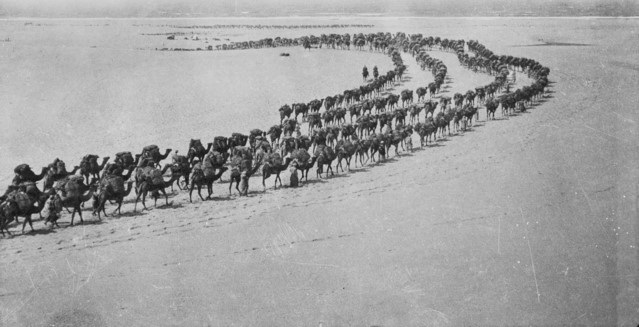
The camel transport carrying rations for
personnel of the 3rd Light Horse Brigade at Rafa
Click to enlarge
(Source: Australian War Memorial)
Another brother, Edward Townley Peel, also served in Egypt with the British Expeditionary Force. Edward joined up on 26 August 1914 as a Captain in the 1st Battalion, Wiltshire Regiment. He was awarded the Distinguished Service Order and the Military Cross. He served on the Western Front, Gallipoli and the Middle East. He left the Army in 1919 as a Colonel. He was awarded the KBE in 1944, when he was listed as a British subject resident in Egypt.
A further brother, Digby Robert Peel, served in the Royal Field Artillery in the First World War. He had originally joined in 1907 and was later posted to Kildare in Ireland. He began his service as a Lieutenant and rose to the rank of Major. He was awarded the Military Cross.
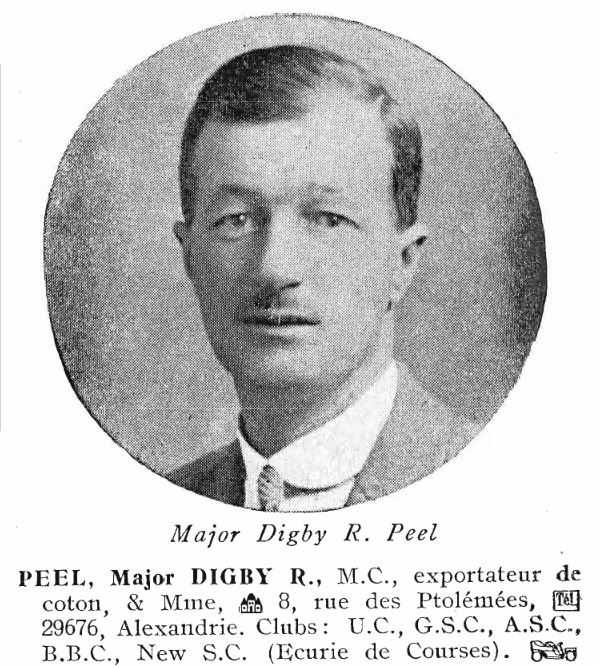
Major Digby Peel
Click to enlarge
Charles was serving near Ypres on 24 May 1915. Around 2.45 am, the Germans launched a poison gas attack. The Battalion strength was 666 men. By 9.30 pm, only one officer and 20 other ranks 'retired' to headquarters — 645 men were shelled, gassed, or driven insane by the poison. Many of the 'survivors' died slowly in the following years.
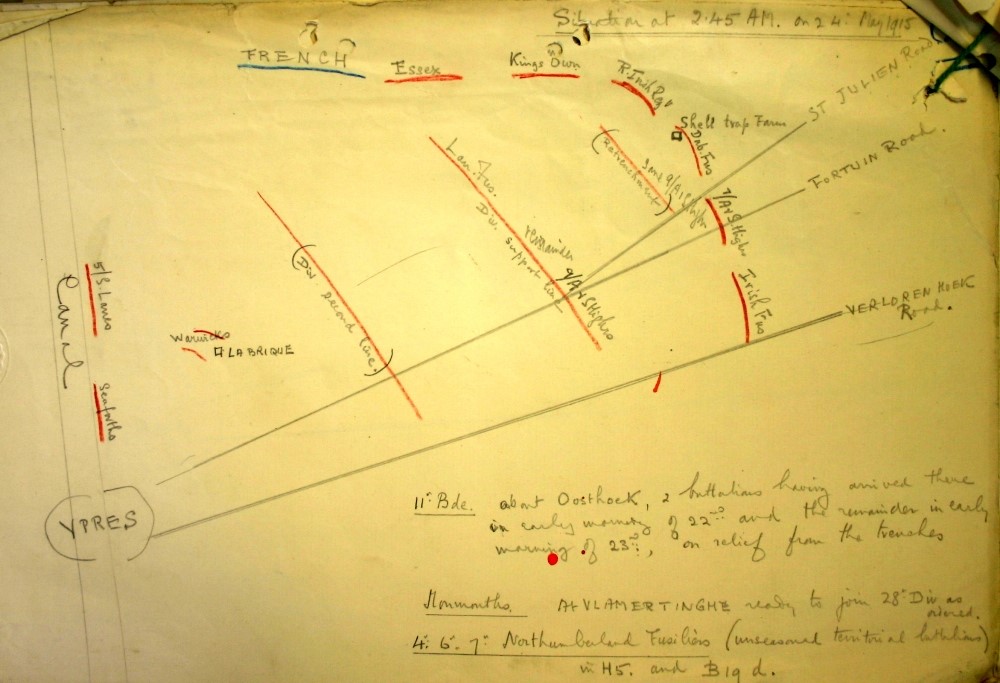
Sketch map showing situation at 2.45am on 24 May 1915.
Click to enlarge
From the 4th Division General Staff HQ May 1915 War Diary
held at The National Archives (ref. WO95/1442).
The War Diary records:
"Germans advancing under cover of enfilade fire, in small parties, finally occupied Battalion line by 2.30pm. Shelling ceased but rifle and M.G. fire remained accurate and constant, whenever a target presented itself, until dusk."
In the face of such a breakthrough it was decided, that evening, to withdraw to a more defensible line. Exhausted by their staunch defence the Battalion was withdrawn at 9.30 pm and bivouacked on the west bank of the canal. The War Diary records the Battalion strength in trenches on the morning of 24 May as being 17 officers and 651 other ranks. Such had been the ferocity of the fighting, the shellfire, rifle and machine gun fire with the addition of the night-time chlorine gas attack that, when relieved, only one officer and 20 other ranks crossed the canal. What remained of the Battalion (reinforced by a draft) moved back to Vlamertinghe Chateau the following day. The entire Battalion strength was only 2 officers and 190 other ranks.
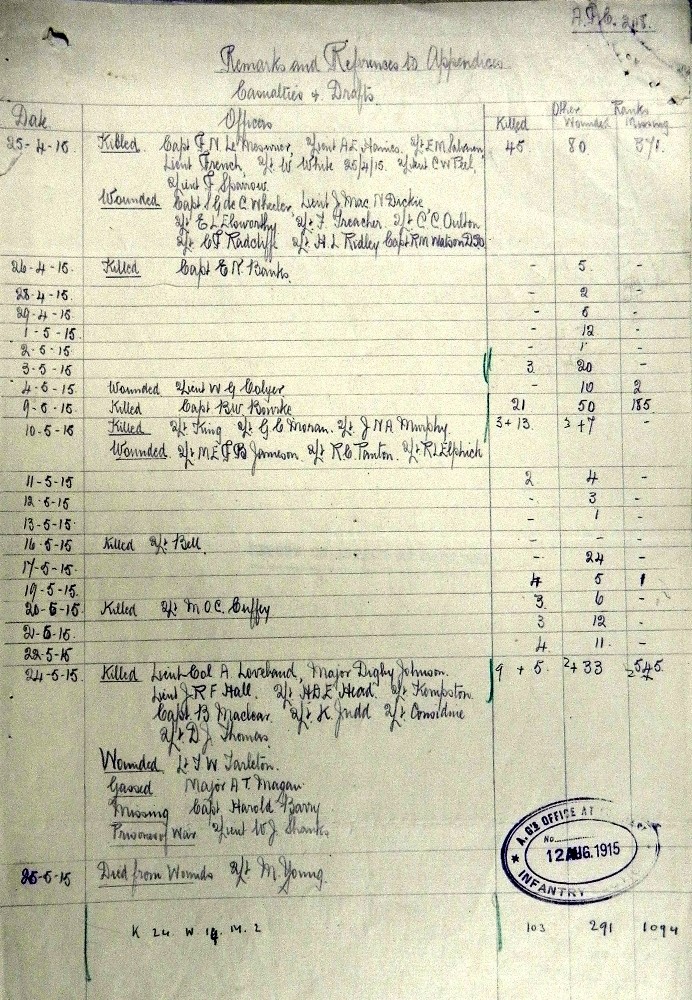
Casualty list recording Charles Peel's death
Click to enlarge
Charles has no known grave and is commemorated on panel 44-46 of the Menin Gate in West-Vlaanderen, Belgium. This is the memorial to some 54,000 officers and men with no known grave who remained missing in the Ypres Salient during the first Battle of Ypres from October to November 1914 and the second Battle of Ypres in April 1915.
He is commemorated on a memorial in Hartfield churchyard which was erected by his mother in 2016. It was reported:
A beautiful cross with the figure of Our Lord on it has been erected in the churchyard by Mrs Peel in Memory of her son Lieutenant Charles Peel who was killed at St Julien on April 25th 1915 and of his old village comrades who have fallen in the war, their names being William Wheatley, Thomas Honeysett, Fred Edwards, Ernest Vaughan, John Shelley, James Bassett.
All these men are included in our case studies.
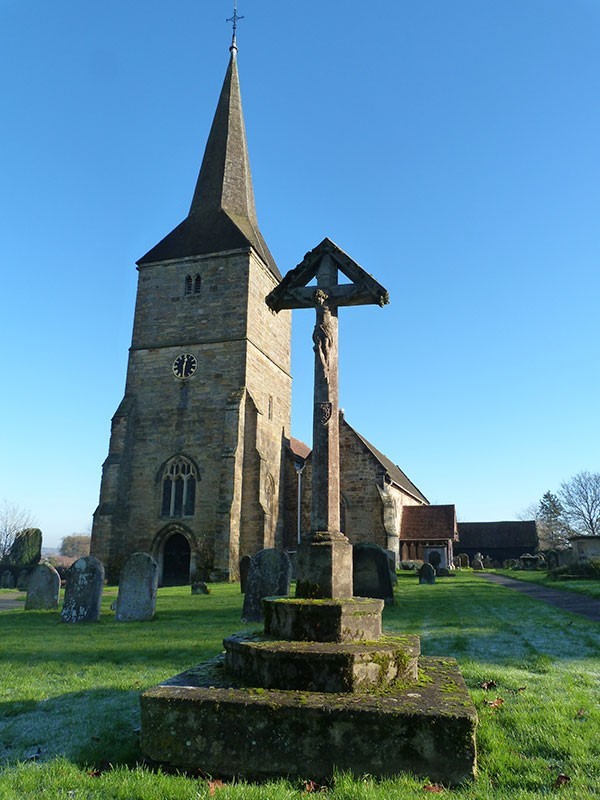
The Church of St Mary the Virgin, Hartfield
Click to enlarge
Charles is also remembered on the Hartfield war memorial as he lived for a time at White House, Hartfield.
Kevin Tillett
22 November 2015
Last updated (by Carol O'Driscoll) 15 November 2021

